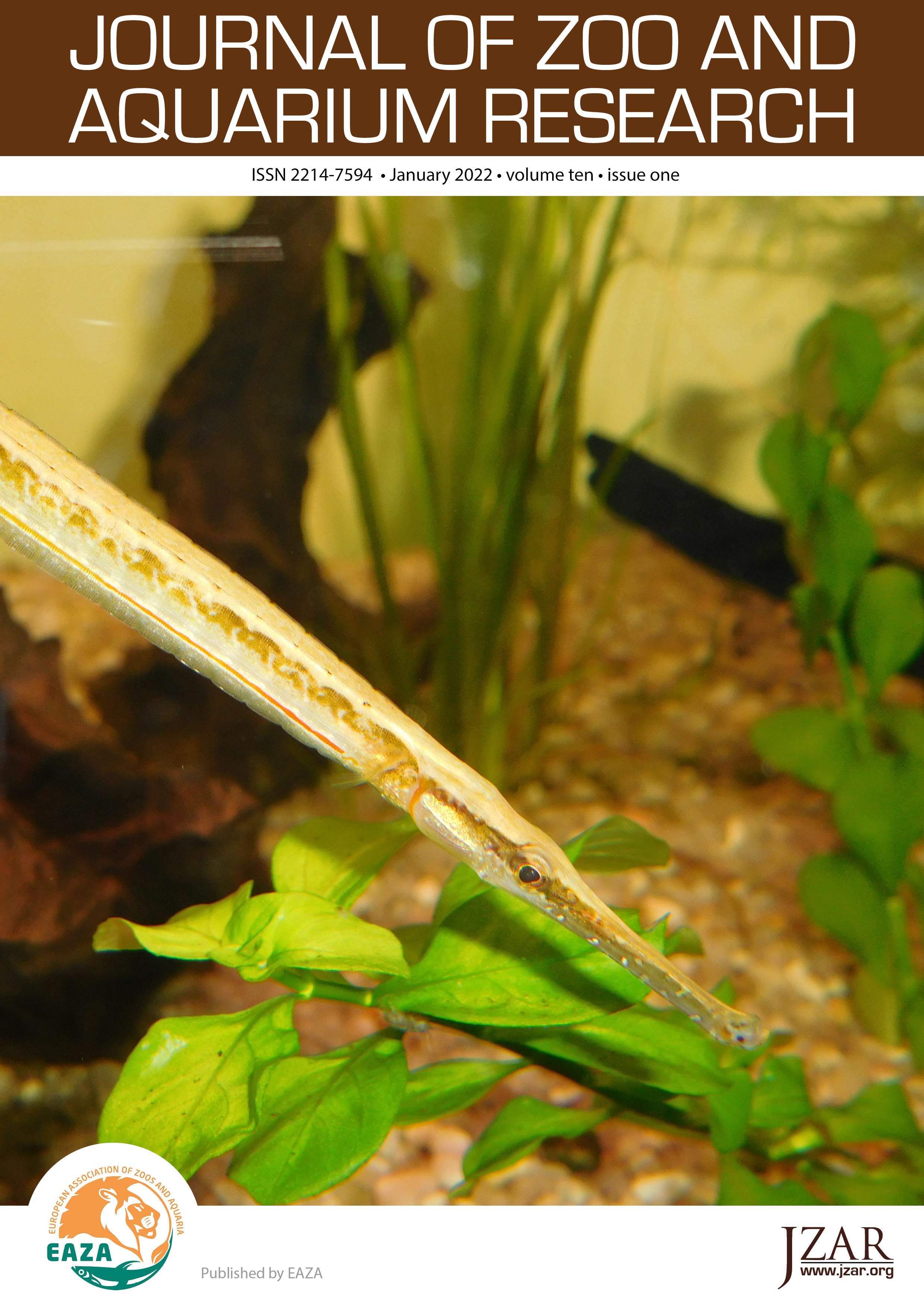Monitoring the behaviour and stress physiology of male gorillas Gorilla gorilla gorilla for one year following bachelor group formation
DOI:
https://doi.org/10.19227/jzar.v10i1.593Keywords:
Androgens, Behaviour proximity, Glucorticoids, NoninvasiveAbstract
Gorillas Gorilla gorilla gorilla are polygynous so zoos are challenged to provide lifelong socialisation for males not living in mixed-sex or breeding troops. One approach is to establish and manage all-male “bachelor” groups; however, there is little published information on the behavioural and physiological impacts that group formation may have on these individuals. Therefore, we monitored the physiology and sociality of four male gorillas who were between 5.5 and 9 years old during the formation of a bachelor group at Lincoln Park Zoo (Chicago, IL, USA). Our objectives were to monitor negative behaviours (abnormal and agonistic), proximal inter-individual distance and faecal glucocorticoid (FGM) and androgen metabolites (FAM) during group formation. Data were collected in two six-month periods: immediately following the introduction (Period 1) and the subsequent six months (Period 2). The percentage of time spent engaging in agonistic and abnormal behaviours was low (less than 3%) for all males during both Period 1 and Period 2. Proximity (i.e. inter-individual distances) within each possible dyad of males did not differ across periods, except for between two individuals, where their average inter-individual distance increased from Period 1 to 2. From Period 1 to Period 2, mean FGM (ng/g wet faeces) decreased significantly for two of the four males, but there was no change for the other two males. In Period 2, FAM differed significantly (increased) for only one male. Relatively low levels of behavioural and physiological stress indicators during the study were desired outcomes for this bachelor group formation.
Downloads
Published
How to Cite
Issue
Section
License
JZAR fulfils the DOAJ definition of open access and provides free and open access to the full text of all content without delay under a Creative Commons licence. The copyright holder of JZAR publications grants usage rights to third parties, allowing for immediate free access to the work and permitting any user to read, download, copy, distribute, print, search, or link to the full texts of articles.







